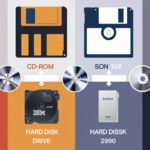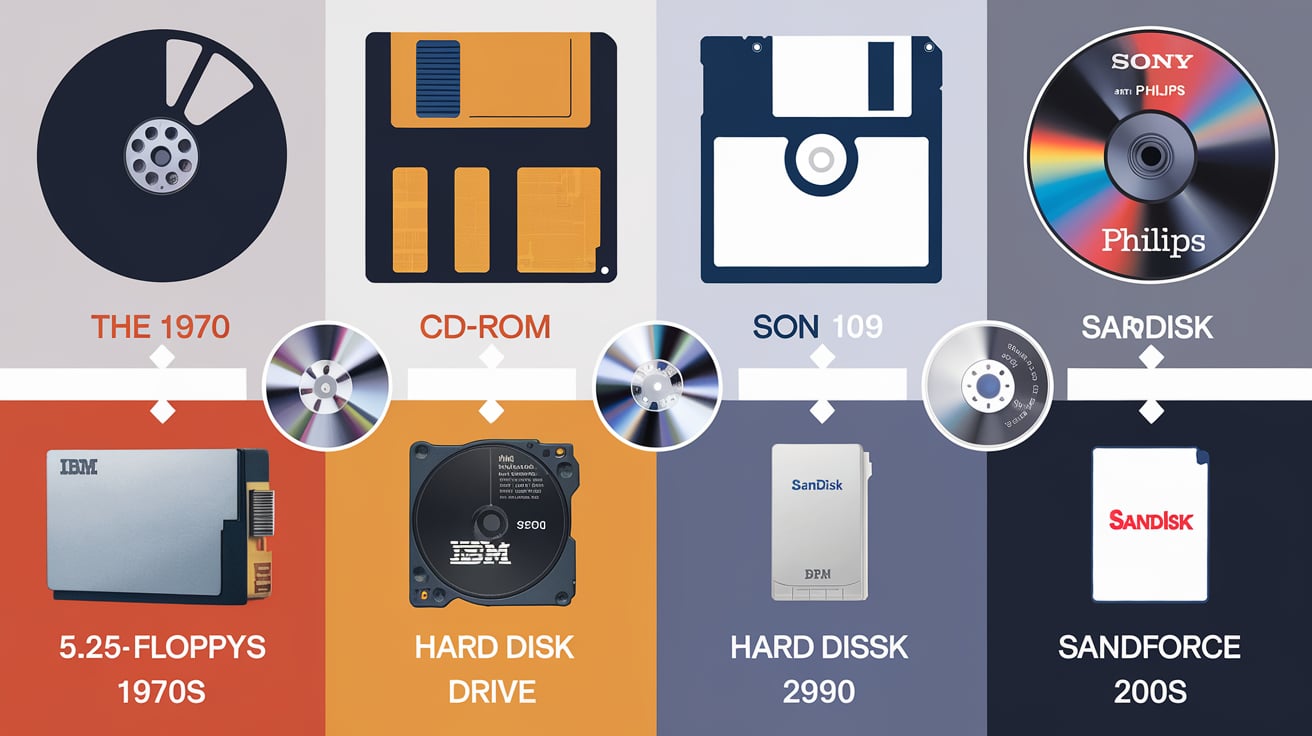Introduction
The term “USA Disk” encompasses the evolution of data storage technology in the United States, from early magnetic storage systems to modern solid-state drives (SSDs). The journey of storage devices has been shaped by American innovation, with companies like IBM, Western Digital, and Seagate leading the way. This article explores the historical milestones, technological advancements, and the future of disk storage in the US.
The Origins of USA Disk Technology
The concept of disk-based storage began in the 1950s with IBM’s introduction of the 305 RAMAC, the first commercial hard disk drive (HDD). This massive machine housed fifty 24-inch platters and could store only 3.75 MB of data—an astonishingly low capacity by today’s standards. However, it revolutionized computing by enabling random access storage, paving the way for more sophisticated systems.
Advancements in the 1960s and 1970s
During the 1960s, removable disk packs became popular, allowing businesses to expand their storage capacity more flexibly. IBM’s 1311 disk drive was one of the first widely used removable storage solutions. By the 1970s, smaller form factors like the 8-inch floppy disk and the first 5.25-inch hard drives were developed, setting the stage for personal computing.
The Personal Computer Revolution of the 1980s
The rise of personal computers in the 1980s led to significant developments in the USA Disk market. The industry standardized the 3.5-inch HDD for desktops and the 2.5-inch HDD for laptops. Storage capacities improved rapidly, with early drives holding only a few megabytes, but reaching hundreds of megabytes by the late 1980s.
The 1990s: Higher Capacities and Early SSD Concepts
By the 1990s, hard drive technology had advanced dramatically, introducing gigabyte-capacity disks for consumer and enterprise use. IBM developed the first commercial solid-state drive (SSD) in the early 1990s, though it was costly and primarily used in niche markets like military and aerospace applications.
Emerging Trends in USA Disk Manufacturing
The USA Disk industry is seeing rapid advancements in manufacturing techniques that enhance both efficiency and durability. Companies are experimenting with graphene-based storage, which could significantly extend the lifespan of disks while reducing heat generation. Additionally, 3D NAND technology is revolutionizing SSDs by increasing storage density without compromising performance, making high-capacity disks more accessible to consumers.
The Role of AI and Machine Learning in USA Disk Optimization
Artificial intelligence (AI) and machine learning are now playing a crucial role in USA Disk optimization. Predictive algorithms are being used to detect potential disk failures before they happen, reducing data loss and improving reliability. Additionally, AI-driven storage management systems are optimizing disk usage in cloud environments, ensuring efficient data retrieval and minimizing latency.
Sustainability and Eco-Friendly Storage Solutions
With growing concerns over electronic waste, the USA Disk industry is shifting towards more sustainable storage solutions. Companies are developing biodegradable storage materials and energy-efficient disk drives that consume less power while maintaining high performance. Recycling initiatives for old hard drives and SSDs are also gaining traction, reducing environmental impact and promoting a circular economy in the storage sector.
USA Disk in the Age of Quantum Computing
Quantum computing is expected to redefine how USA Disk technology evolves in the future. Traditional storage methods may struggle to keep up with the sheer volume of data generated by quantum processors, leading to the development of quantum-resistant storage solutions. Scientists are already exploring topological qubits and holographic storage as potential alternatives, ensuring that future disk technologies remain compatible with next-generation computing.
The 2000s: SSDs Challenge Traditional HDDs
The early 2000s saw the rise of flash memory-based SSDs, which offered superior speed, reliability, and energy efficiency. Companies like Intel and Samsung pushed SSD technology forward, making it more accessible for consumer devices. However, HDDs remained dominant for large-scale data storage, thanks to their affordability.
Present-Day USA Disk Market
Today, the USA Disk landscape is dominated by SSDs in consumer electronics, while HDDs continue to be crucial for data centers and cloud storage. Cutting-edge technologies such as NVMe (Non-Volatile Memory Express) SSDs have revolutionized speed and efficiency, making them the preferred choice for high-performance computing.
The Future of USA Disk Storage
Looking ahead, the storage industry is exploring helium-filled HDDs for higher densities, shingled magnetic recording (SMR) for enhanced data writing efficiency, and DNA-based storage for ultra-long-term archival solutions. Quantum storage technologies may also redefine how data is stored and retrieved in the coming decades.
Conclusion
The USA Disk industry has undergone remarkable transformations, from bulky magnetic storage systems to high-speed flash memory and cloud-based solutions. As technology continues to advance, the demand for efficient, high-capacity, and durable storage will shape the future of disk drives in the United States. Whether through SSDs, HDDs, or emerging alternatives, USA Disk technology remains at the heart of the digital revolution.









